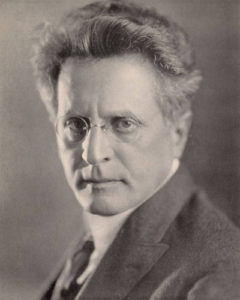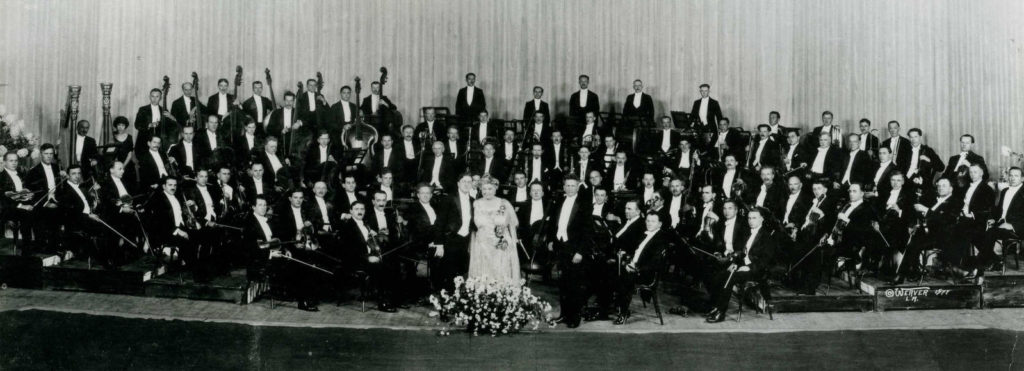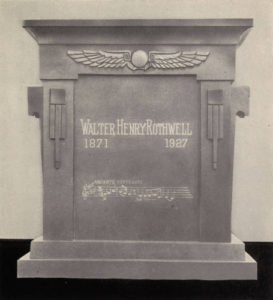Walter Henry Rothwell
Values Codes I – E – L
Walter Henry Rothwell (né Rothschild) was born in London in 1872 to Bertha Löwenberg of Hohenems, Austria, and Barnet Robert Rothschild of Dover, England.
Along the way . . .
A musically gifted child, Rothwell entered the State Academy of Music in Vienna at the age of nine.
After graduating at fifteen with the highest honors (first prize and gold medal), he continued studying piano and composition in Vienna and Munich.
Despite his youth, he became a coach with the Vienna Court Opera, where he caught the attention of Bernhard Pollini (né Baruch Pohl), impresario of the Hamburg Orchestra. Pollini arranged for Rothwell to be Gustav Mahler’s assistant conductor at the Hamburg State Opera.
Rothwell left Hamburg after two years to pursue first conductor duties in major European cities.
Theater entrepreneur Colonel Henry W. Savage (who had no military background) saw Rothwell at the Royal Opera House in Amsterdam, and hired him to conduct 114 American performances of Wagner’s Parsifal in English (1904-1905) with the English Grand Opera.
The tour was followed by two seasons of Puccini’s Madame Butterfly in English, which included performances in Stockton, San Jose, Oakland, San Diego, Santa Barbara, and Los Angeles.
The Los Angeles Herald billed Rothwell as “the magnetic conductor from Vienna.” (August 25, 1907)
Rothwell briefly returned to Europe to direct opera at Frankfurt am Main before becoming the first (and only) principal conductor of the Saint Paul Symphony Orchestra in 1908.
The symphony folded in 1915, sending Rothwell to New York City to work as a freelance teacher and guest conductor.
Jewish Identity
Walter Henry Rothwell apparently went by the English surname for his entire career, presumably to distance himself from one of the most recognizably Jewish names in Europe.
Contrastingly, his brother Robert retained the Rothschild surname, co-founding a successful construction firm in San Francisco, Haas and Rothschild.
Adopting Christian names was not uncommon for public figures of Jewish lineage, particularly in the arts.
Rothwell also got his start at the Vienna Court Opera, where Mahler was later required to embrace Catholicism to “qualify” as conductor.
Mahler and Rothwell did not cross paths in Vienna. Rothwell left Vienna in the 1890s to assist Mahler in Hamburg for two years. Mahler converted in 1897 after relocating to Vienna from Hamburg.
It is therefore likely that Rothwell’s name change, and probable conversion to Catholicism, occurred years before Mahler’s baptism, perhaps during his time with the Vienna opera.
Los Angeles Philharmonic
The Los Angeles Symphony Orchestra, directed by Adolph Tandler, had been offering six to eight programs per year since 1898. However, the semi-professional orchestra left much to be desired.
William A. Clark Jr., an amateur violinist and son of a Montana copper baron, pledged a gift of $200,000 to establish the Los Angeles Philharmonic, with an additional $150,000 paid annually for the first five years.
Clark hired Lynden Ellsworth Behymer to manage the Philharmonic. Formerly of Ohio, Behymer had been a business agent in Los Angeles for thirty years, and previously managed both the Los Angeles Symphony and the city’s amateur Woman’s Symphony.
Clark originally invited Sergei Rachmaninoff to conduct the new orchestra. Walter Henry Rothwell proved a worthy second choice.
Rothwell led the Philharmonic’s inaugural concert in October 1919 at Trinity Auditorium, then California’s largest reinforced concrete building. The following year, the orchestra moved to the larger Clune’s Auditorium, which was renamed the Philharmonic Auditorium.
Music critic Edwin Schallert raved about the Philharmonic’s debut:
“Convincingly proving his ability to weld into shape a new organization and his capacity for realizing both the musical and artistic content of his programme, Walter Henry Rothwell, as conductor of the Philharmonic Orchestra, yesterday startled Los Angeles out of her symphonic slumbers and introduced what might be termed a new epoch in local musical history.” – Los Angeles Times, October 25, 1919
Bruno David Ussher, the Los Angeles-based critic for the Pacific Coast Musical Review, predicted that Rothwell would turn the culture-starved “city haphazard” into the “city beautiful.” (October 4, 1919)
Popular appeal was a shared aspiration of Clark, Behymer, and Rothwell. In a city lacking a robust tradition of concert music, accessibility was key.
The first performance featured crowd favorites: Dvořák’s New World Symphony, Weber’s Overture to Oberon, Liszt’s Les Preludes, and Chabrier’s España Rhapsody.
The inaugural season included twelve pairs of regular Friday and Saturday Symphony programs, plus eight “popular” concerts and over twenty programs for children. None of the concerts exceeded an hour and forty-five minutes.
The second season added performances in other Southland cities, including Pasadena, Santa Ana, and San Diego.
The third season presented 126 different works at forty-two symphony and popular concerts.
Clark also sponsored a series of outdoor concerts, with tickets priced at ten, twenty-five, and fifty cents. These concerts, including the popular Easter Sunrise Service, were first held at the crest of Olive Hill (now Barnsdall Park) and soon thereafter at the Hollywood Bowl, which began as a natural amphitheater with moveable wooden benches. The signature shell and permanent seats were added in 1926.
The Philharmonic made its radio debut in January 1925 on KHJ, the Los Angeles Times station. Broadcasts of the Los Angeles Philharmonic began as The Standard Hour, named for the sponsorship of the Standard Oil Company. Through a network of five radio stations, the Sunday programs reached the entire Pacific Coast.
Family
Walter Henry Rothwell was married to Elizabeth Rothwell Wolf, an accomplished soprano.
Elizabeth frequently sang under her husband’s direction, including as the lead in Madame Butterfly and in several Philharmonic performances.
Rothwell’s career ended abruptly on March 13, 1927. He suffered a fatal heart attack while driving to the beach in Santa Monica, where he regularly retreated to study scores.
According to his physician, Rothwell “died of a defective heart weakened by years of intensive work.” – Los Angeles Times, March 13, 1927
Walter Henry Rothwell was interred at the crematorium of the Cathedral Mausoleum at Hollywood Forever Cemetery.
He was survived by his brother in San Francisco, his sister and mother in Vienna, and his wife and two young children, who were living in New York at the time.
His apparent estrangement from Elizabeth was revealed after his death, when newspapers reported on a curious aspect of his will. Elizabeth had been barred from sharing in his estate. Instead, one-third was to go to Wanlyn Carswell, a “friend” who was twenty-two years younger than Rothwell, and the rest going to his children and his kin in Vienna. The controversy was resolved in Elizabeth’s favor months later.
Source
- Jonathan L. Friedmann, A City Haphazard: Jewish Musicians in Los Angeles, 1887-1927 (Washington, D.C.: Academica, 2017).
Jonathan Friedmann is curator for this Walter Henry Rothwell exhibit.



